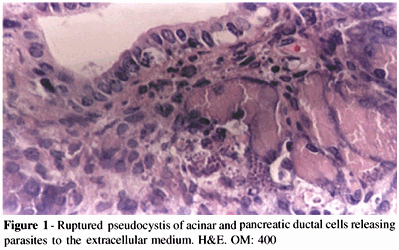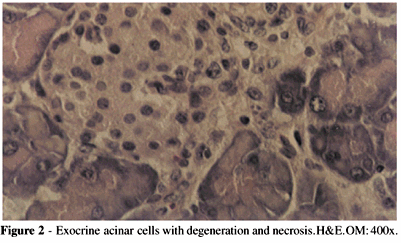BACKGROUND: Chagas' disease is an endemic tropical affliction found from southern United States to Argentina. The acute phase of this disease is difficult to study in man because the symptoms are non-specific and most cases require no medical assistance. Experimental models have been developed for sequential studies, and intense parasitism in all organs and tissues, including the pancreas, have been detected in the acute phase. PURPOSE: To evaluate the involvement of the pancreas in acute experimental Chagas' disease in a mouse model by histopathological characterization. CASUISTIC AND METHODS: Ten BALBc mice, about 20 g, injected i.p. with 100 000 forms of the Y strain of Trypanosoma cruzi were used. The animals were sacrificed after 14 days of infection. Fragments of pancreas were processed by conventional paraffin embedding and hematoxylin-eosin staining. RESULTS: Ruptured pseudocysts and release of parasites to the extracellular medium caused by necrosis of acinar and duct cells and foci of fat were the most striking histopathological features of acute Chagasic pancreatitis. CONCLUSION: Parasitism is the main cause of acute pancreatitis in Chagas' disease.
Chagas' disease; Pancreas; Pathology; Mouse model; Trypanosoma cruzi




